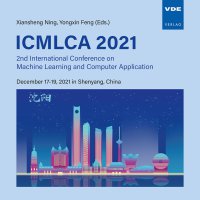Simulation of Formation Control for AUVs with Reinforcement Learning Toolbox
Konferenz: ICMLCA 2021 - 2nd International Conference on Machine Learning and Computer Application
17.12.2021 - 19.12.2021 in Shenyang, China
Tagungsband: ICMLCA 2021
Seiten: 5Sprache: EnglischTyp: PDF
Persönliche VDE-Mitglieder erhalten auf diesen Artikel 10% Rabatt
Autoren:
Guo, Xiaomin (School of Automation and Electrical Engineering, Shenyang Ligong University, Shenyang, Institute of Automation Chinese Academy of Sciences, Institutes for Robotics and Intelligent Manufacturing, Chinese Academy of Sciences, Shenyang, China)
Li, Xiaowen (College of Information, Liaoning University, Shenyang Institute of Automation Chinese Academy of Sciences, Institutes for Robotics and Intelligent Manufacturing, Chinese Academy of Sciences, Shenyang, China)
Wang, Bing; Li, Yan (Shenyang Institute of Automation Chinese Academy of Sciences, Institutes for Robotics and Intelligent Manufacturing, Chinese Academy of Sciences, Shenyang, China)
Gao, Hongwei (School of Automation and Electrical Engineering, Shenyang Ligong University, Shenyang, China)
Inhalt:
Autonomous Underwater Vehicle (AUV) plays an important role in plenty of fields. It is a challenging task to design a high-performance formation controller for AUVs. In this paper, a formation control policy of dual underwater vehicles based on the deep reinforcement learning method Deep Deterministic Policy Gradient method (DDPG) is proposed. The goal of our scenario is that the back AUV follows the front AUV at a certain safe distance. The policy trains the speed and direction of the back AUV, meanwhile, the customized reward function is used to ensure that the distance between the back AUV and the front AUV is within the safe distance range, and minimize the lateral deviation. The simulation results show the effectiveness of the deep reinforcement learning method in AUV formation control.


